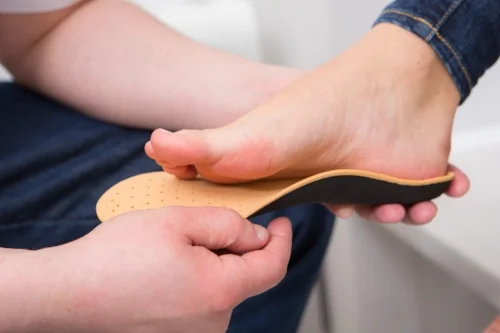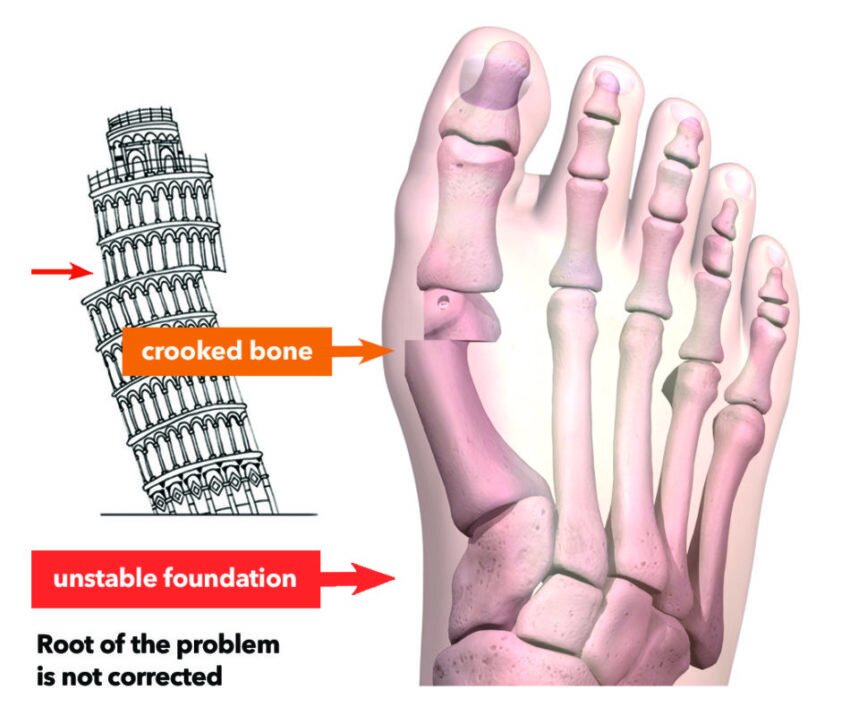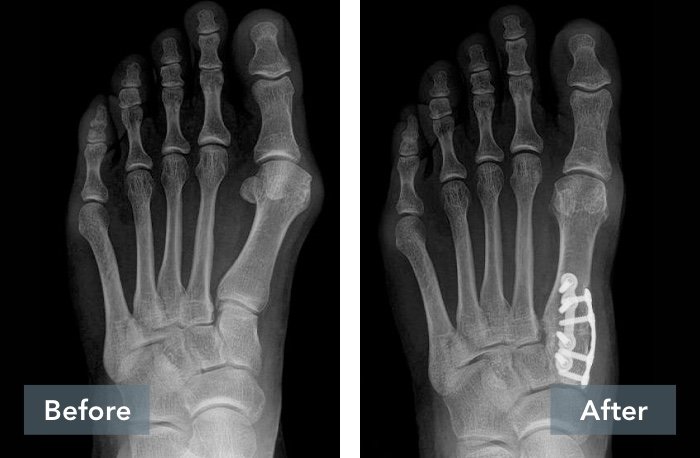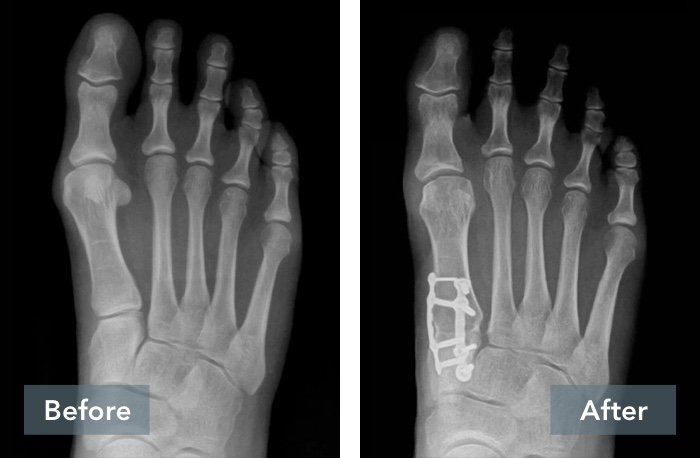Painful Bunions & Flat Feet
Painful bunions are common in patients that we treat, associated with pain by the big toe. Our practice provides everything from alternative footwear to bunion surgery when necessary. Flat feet is another type of pain caused by a lack of arch, typically cared for with orthotics. In severe cases, Dr. Morelli and his team will provide surgical management when necessary.
What is a bunion?
A bunion is a bony bump that takes shape on the base of the first, or big, toe. Bunions are a progressive deformity that can become more severe over time. The most common symptoms associated with this condition are pain on the side of the foot, often aggravated when one is wearing shoes.
Is it possible to prevent bunions?
If diagnosis is made early on, bunion progression can be slowed down by proper footwear and custom shoe inserts. It is recommended that you see a podiatrist early on to fully evaluate a bunion and offer treatment.
What are flat feet?
Most people have a gap under the arch of their foot when they are standing. The arch, the inner part of the foot is slightly raised off the ground. People with flat feet or fallen arches either have no arch, or it is very low. The feet of people with fallen arches may roll over to the inner side when they are standing or walking, known as overpronation. The feet may point outward.
How are bunions treated?
Our podiatrists diagnose flat feet by first watching the patient stand and walk, and by examining the feet. After x-rays and an examination of the patient's foot, the podiatrist will determine the severity of the problem before recommending treatment. Treatment options may include:
Supportive, well-fitted shoes or insoles and custom orthotics to reduce pressure and relieve pain
Anti-inflammatory medications or painkillers can help ease the discomfort and pain associated with bunions.
Custom sole orthotics or orthopedic shoes may help slow a bunions progression and reduce pain if the condition is mild.
If pain and discomfort are hindering your daily activity and mobility, surgery is usually required to re-align the bone under the big toe.The surgical operation to correct a bunion is referred to as a bunionectomy. Surgeries are often, but not always successful, but the best way to revive foot function and relieve pain in severe cases.
Bunion surgery is changing. Learn about Lapiplasty 3D Bunion Correction…
Where appropriate for the patient, our podiatrists may recommend the Lapiplasty 3D Bunion Correction. While traditional 2D osteotomy surgery—most commonly used by podiatrists—merely cuts and shifts the bone to address the cosmetic bump, Lapiplasty 3D Bunion Correction does more. It corrects the entire bone in 3D and secures the unstable foundation to get you back on your feet quickly. This procedure has shown low recurrence: 99% maintain this correction in 17 months.
What does recovery look like?
Within days, you’ll begin to put some weight on your foot. At 4-6 weeks, you’ll walk in a boot and return to daily activities. At 6-8 weeks, you’ll transition back into comfortable shoes. At 4-6 months, you’ll resume most activities and return to normal footwear.
Click here for a video about this procedure or inquire with one of our doctors.





